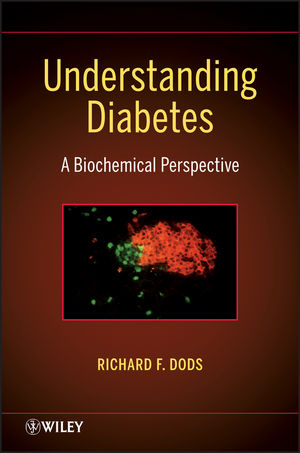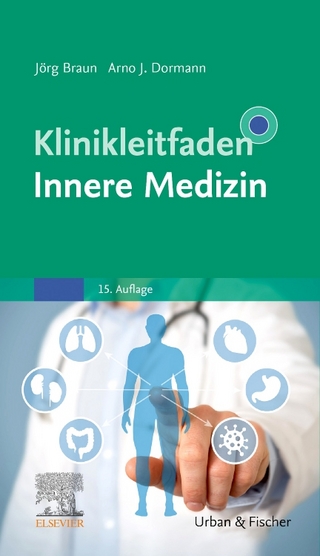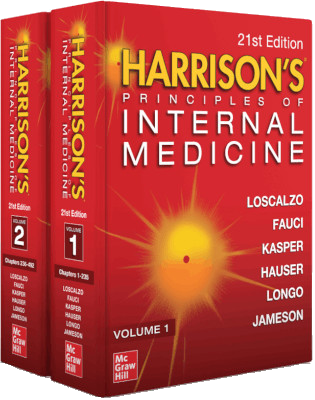
Understanding Diabetes
John Wiley & Sons Inc (Verlag)
978-1-118-35009-6 (ISBN)
A clear explanation of the cause, diagnosis, and treatment of diabetes
Written for a broad range of readers, including students, researchers, policymakers, health care providers, and diabetes patients and caregivers, this book explains the underlying biochemistry and physiology of diabetes mellitus. Each chapter contains a glossary that defines key terms, a summary that highlights essential concepts discussed in each section of the chapter, as well as a set of simple problems to help readers gain a richer and deeper understanding of diabetes, from its history to treatment options.
Understanding Diabetes begins with an overview of the disease, its worldwide prevalence and cost, and its connection to the global obesity epidemic. The author then explores the history of diabetes, including the first documented description of the disease dating back to 3400 BCE in Ancient Egypt. The next chapter, A Glucose Metabolism Primer, sets forth the pathways for the metabolism of glucose. Next, the book covers:
Regulation of glucose metabolism and glucose metabolism gone wrong
Diabetes classification system
Diagnosis, including current laboratory tests
Complications, such as retinopathy, neuropathy, and cardiovascular disease
Hereditary transmission
Prevention and treatment, including emerging research
Although a cure has still not been found, this book demonstrates that researchers are continuing to make major breakthroughs on all fronts in the fight against diabetes, including a better understanding of its causes and an improved ability to diagnose and treat the disease.
RICHARD F. DODS, PhD, D.ABCC, has studied, taught, and written about diabetes mellitus for many years, beginning as a research associate at New York University Medical School. As Director of Clinical Chemistry at the Louis A. Weiss Memorial Hospital, Dr. Dods published pioneering papers on the use of HbA1c as a test for monitoring diabetes mellitus. Later, he established his own company, Clinical Laboratory Consultants, which advised hospital and commercial laboratories on the implementation and interpretation of assays and the use of instruments for the diagnosis and monitoring of disease, including diabetes.
PREFACE xvii
1 DIABETES MELLITUS: A PANDEMIC IN THE MAKING 1
Diabetes Prevalence and Cost in the United States 2
A Dire Prediction Based on Alarming Data 2
The Increase of Diabetes in Youths 4
The Cost 6
Diabetes Prevalence and Cost Worldwide 7
A Worldwide Epidemic 7
Numbers of Cases of Diabetes 7
Cost 7
Obesity and Overweight; Another Epidemic in the United States 9
A Parallel Pandemic 9
Definitions of Overweight and Obesity 9
Overweight and Obesity among Adults in the United States 9
Obesity and Overweight among Children and Adolescents in the United States 12
Overweight and Obesity Worldwide 14
Overweight and Obesity Globally in Adults 14
Overweight and Obesity in Children 16
The Relationship Between Obesity and Diabetes 16
Projects and Questions 18
Glossary 18
References 19
2 AN EARLY HISTORY OF DIABETES MELLITUS 23
Translation 24
More simply stated 24
The Ebers Papyrus 24
Neandertals 25
Hippocrates, Aretaeus, and Demetrius 25
Galen 26
Sushruta 27
Ibn Sina (Avicenna) 28
The Yellow Emperor 29
Japanese Medicine 29
Paracelsus (Philippus Aureolus Theophrastus Bombastus von Hohenheim) 30
Thomas Willis 31
Johann Conrad Brunner 31
Matthew Dobson 31
John Rollo and William Cruickshane 32
Thomas Cawley 33
Michel Eugene Chevreul 34
Claude Bernard 34
Paul Langerhans (Edouard Laguesse and Eugene L. Opie) 35
Oscar Minkowski and Josef von Mering 36
Advances in Sugar (Glucose) Determinations 37
Earliest Approaches—Taste and Fermentation 37
Evaporation of Urine to Yield Sugar Crystals 38
Moore’s Test 38
Trommer’s Test 39
Barreswil and Fehling’s Solutions 39
Frederick Pavy 40
Benedict’s Solution 40
Folin–Wu Determination of Blood Glucose 41
Banting, Best, and MacLeod 43
Leonard Thompson 44
John Jacob Abel 45
Frederick Sanger 45
Pedro Cuatrecasas 48
Questions and Crossword Puzzle 50
References 52
3 A PRIMER: GLUCOSE METABOLISM 55
Prolog 55
The Carbohydrates and their Function 56
Digestion and Absorption of Carbohydrates 57
Salivary and Pancreatic Amylase 57
Disaccharidases 58
Absorption 59
Overview of Glucose Metabolism 60
Adenosine 5 -Triphosphate (ATP) 61
Glucose Metabolism 63
Glucose Transport into Cells 63
Phosphorylation of Glucose 64
Introduction to Glycogen Synthesis and Hydrolysis 65
Beautiful Concepts 65
Glycogen Synthesis 66
Uridine Bisphosphate Glucose (UBP-Glucose) 67
Glycogen Synthase 67
Branching Enzyme 69
Glycogenolysis 69
Debranching Enzyme 70
Glycogen Phosphorylase 71
Phosphoglucomutase 71
Glucose 6-Phosphatase 72
α(1 → 4)-Glucosidase 72
Synchronization of Glycogenesis and Glycogenolysis (A Beautiful Pathway) 72
Dephosphorylation 73
Effectors 73
Glycolysis (Glycolytic Pathway) 75
Phosphoglucose Isomerase 75
Phosphofructokinase 76
Aldolase 76
Triose Phosphate Isomerase 76
Glyceraldehyde 3-Phosphate Dehydrogenase 77
Erythrocyte Bisphosphoglyceromutase and Bisphosphoglycerate Phosphatase 77
3-Phosphoglycerate Kinase 78
Phosphoglyceromutase 78
Enolase 78
Pyruvate Kinase 78
Lactate Dehydrogenase 79
Tricarboxylic Acid Cycle 80
The Coenzymes: Nicotinamide Adenine Dinucleotide (NAD+) and Flavin Adenine Dinucleotide (FADH) 81
Steps in the Tricarboxylic Acid Cycle 83
Pyruvate Dehydrogenase; Acetyl CoA 83
Pyruvate Decarboxylase 84
Dihydrolipoyl Transacetylase 85
Dihydrolipoyl Dehydrogenase 86
Citrate Synthase 86
Aconitase 86
Isocitrate Dehydrogenase 87
α-Ketoglutarate Dehydrogenase 87
Succinate Dehydrogenase 88
Fumarase 89
l-Malate Dehydrogenase 89
Pyruvate Carboxylase 89
Glycolysis 90
Tricarboxylic Acid Cycle 90
Sum Total of Glycolysis and Tricarboxylic Acid Cycle 90
Summary 90
The Electron Transport System and Oxidative Phosphorylation 91
Steps in the Electron Transport System 92
Oxidative Phosphorylation (ATP Synthase) 95
Shuttles 97
Glycerol 3-Phosphate Shuttle 97
Malate–Aspartate Shuttle 97
Moles ATP Produced by Oxidative Phosphorylation from 1 mol of Glucose 97
The Phosphogluconate Oxidative Cycle 98
Steps in The Phosphogluconate Oxidative Cycle 99
Glucose 6-Phosphate Dehydrogenase; Lactonase 99
Transaldolase 101
Transketolase 101
The Fate of Glyceraldehyde 3-phosphate 101
Uronic Acid Pathway 103
Hexosamine Biosynthesis Pathway 104
The Steps of Gluconeogenesis 105
Conclusions 108
Questions 108
Glossary 109
4 REGULATION OF GLUCOSE METABOLISM 113
Insulin 114
Structure 114
Transport and Secretion of Insulin 114
Insulin Signaling Pathways 118
Akt Pathway 119
GLUT4 Translocation 120
Insulin-Stimulated Glycogenesis 121
Insulin-Stimulated Inhibition of Gluconeogenesis 123
Insulin-Stimulated Protein Synthesis 123
Insulin-Stimulated Lipogenesis (Fatty Acid Synthesis) 124
Insulin-Inhibited Lipolysis (Fatty Acid Hydrolysis) 124
Scaffold Proteins 125
The Incretin Hormones (Incretins) 128
Amylin 131
Other Hormones 133
Glucagon 133
Epinephrine 135
Somatotropin (Growth Hormone) 137
Somatostatin (SST) 139
Cortisol 140
Adrenocorticotropin 142
Thyroid Hormones 143
Insulin-Like Growth Factor (IGF) 146
Fibroblast Growth Factor 19 146
Adenosine 5 -Monophosphate-Activated Protein Kinase 147
Glossary 149
References 150
5 GLUCOSE METABOLISM GONE WRONG 153
Pancreatic β-Cell Mass 156
Glucose Transport and Hexokinase 158
Glycogen Synthesis and Breakdown 160
Glycogen Cycling 161
Gluconeogenesis and Glycogenolysis 164
Glycolysis, Glucose Oxidation, and Pyruvate Dehydrogenase 166
Mitochondrial Defects 169
Tricarboxylic Acid Pathway and Oxidative Phosphorylation 169
Hexosamine Biosynthesis Pathway 174
Techniques Used in the Investigations 175
Hyperinsulinemic-Euglycemic Clamp 175
Vastus Lateralis Muscle Biopsy 176
Glossary 176
References 177
6 CLASSIFICATION SYSTEM FOR DIABETES MELLITUS 183
T1D 184
Latent Autoimmune Diabetes (LADA) or Type 1.5 184
T2D 187
Hybrid 187
Idiopathic Diabetes (T1b) 187
Secondary 187
Genetic Defects of β-islet Function 188
Mody 188
Other Genetic Defects of the β-cell 189
Genetic Defects in Insulin Action 189
Diseases of the Exocrine Pancreas 190
Endocrinopathies 190
Drug or Chemically Caused Diabetes 190
Infections 191
Uncommon Forms of Immune-Mediated Diseases 191
Other Genetic Syndromes Sometimes Associated With Diabetes 192
Prediabetes 192
Gestational Diabetes Mellitus (GDM) 193
Statistical Risk Classes 194
Metabolic Syndrome 195
Glossary 197
References 198
7 DIAGNOSIS OF DIABETES MELLITUS 201
PART 1: Establishing a Normal Range 201
The Concept of Normal and Abnormal Populations 201
The Probability Factor in Diagnosing Disease 203
Probability of Disease and Prevalence 203
The Normal Range 204
Assay Sensitivity and Specificity 205
Relationships Among Sensitivity, Specificity, Prevalence, Predictability, and Normal Range 207
Exercise 208
How Does One Choose a Normal Range? 209
Truthfulness (Efficiency) 209
Non-gaussian Distribution 210
The Effect of Reproducibility on Sensitivity and Specificity 210
Severity of Disease and Assay Results 211
Parallel and Series Multiparameter Testing 212
Exercise 213
Example 215
Example 216
References 216
PART 2: Modern Techniques for the Quantitation of Glucose 216
Methods of Historical Interest 216
Modern-day Methods of Measuring Glucose 218
Glucose OxidasePeroxidaseChromogen 218
HexokinaseNADP 220
Exercise 221
Glycated Hemoglobin 221
Specimen Collection 223
Exercise 225
The Gold Standard 225
Instrumentation 226
References 229
PART 3: Symptoms and Tools for the Diagnosis of Diabetes Mellitus 230
The Symptoms of Diabetes Mellitus 231
Individuals Who Should be Tested for Diabetes 231
Tools for the Diagnosis of Diabetes 233
Urinary Glucose 233
Fasting Blood Glucose 233
Oral Glucose Tolerance Test 234
HbA1c 235
Cut Points for the Diagnosis of Diabetes 237
Diagnosis of Diabetes Using FBG, 2-h PG, or HbA1c 239
Diagnosis of Gestational Diabetes Mellitus 239
Autoimmune Antibodies as Predictors for T1D And LADA 241
Glossary 245
References 246
8 COMPLICATIONS OF DIABETES MELLITUS AND THEIR PATHOPHYSIOLOGY 249
The Complications of Diabetes Mellitus 249
Retinopathy and Other Eye Complications 249
Neuropathy and Related Conditions 252
Nephropathy, Diabetic Kidney Disease (DKD), and End-Stage Renal Disease 254
Cardiovascular Disease (CVD), Hypertension, Coronary Heart Disease or Coronary Artery Disease (CHD), Cerebrovascular Accident (CVA), Pathophysiology of CVD: Endothelial Dysfunction 258
The Pathophysiology of CVD: Endothelium Dysfunction 260
Diabetic Ketoacidosis (DKA) 265
Hyperglycemic Hyperosmolar Non-Ketotic Syndrome 266
Hypoglycemia 266
Infections 267
Alzheimer’s Disease or Alzheimer Disease (AD) 269
Diabetes and Cancer 270
Pathophysiology of Diabetic Complications 272
Glycation 272
Sorbitol Accumulation 275
Reactive Oxygen Species (ROS) in Diabetes 275
Glossary 278
References 278
9 HEREDITARY TRANSMISSION OF DIABETES MELLITUS 283
Inheritance of T1D in Monozygotic and Dizygotic Twins 284
Pairwise and Probandwise Concordance in T1D 284
Pairwise and Probandwise Concordance in T2D 286
Diabetes in Offspring of One or Two Diabetic Conjugal (Biological) Parents 288
Diabetes in Siblings of Diabetics 289
Summary 289
The Genetic Component of Diabetes Mellitus 290
The Major Histocompatibility Complex Proteins or Human Lymphocyte Antigens and Disease 290
Online Mendelian Inheritance in Man 293
HLA Nomenclature 294
HLas and Diabetes Mellitus 295
T1D and Class II Genes 295
T1D and Class I Genes 297
Non-HLA T1D Promoting Alleles 298
Genetics of T2D 298
T1D and Environment 306
Enteroviruses (Coxsackie B Virus) 308
Rubella Virus (German Measles) 309
Mumps Virus 310
Cytomegalovirus 310
Retrovirus 310
Reovirus and Rotavirus 310
Epstein–Barr Virus 311
Viruses that Need More Evidence for the Assumption that They Promote T1D in Humans 311
Viruses That Produce T1D in Animals but so Far no Evidence in Humans 311
Other Environmental Factors 312
Early Exposure to Cow’s Milk as Opposed to Breast Milk 312
Vitamin D 313
Summary 314
Genes and Obesity 314
The FTO Gene 315
The KLF14 Gene 316
Projects 317
Glossary 317
References 318
10 TREATMENT 323
PART 1: Medicinal Treatment 323
Insulin (Early Treatment) 323
It is Not Your Father’s Insulin Any More Modern-Day Human Insulin 326
Genetically Engineered Insulin Derivatives 327
Other Modes of Delivering Insulin: Tablets or Capsules, Inhalable Insulin and Nasal Spray Insulin 330
Closed-Loop Insulin Delivery (Artificial Pancreas) 330
Islet Transplantation and Stem Cell Therapy 331
Antidiabetic Oral Drugs 332
Sulfonylureas 332
Biguanides 333
Thiazolidinediones 335
Incretin-Based Inhibitors 335
Exenatide 337
Liraglutide 337
Albiglutide and Taspoglutide (Long-Acting Release) 337
Sitagliptin, Vildagliptin, and Saxagliptin 337
Amylin Derivatives (Pramlintide) 339
Glucokinase Activators (GKA): Potential Anti Diabetic Compounds 340
α-Glucosidase Inhibitors 341
Other New Strategies that are in the Clinical Trials Phase 342
SGLT2 Inhibitors 342
11β-Hydroxysteroid Dehydrogenase Type 1 Inhibitors 342
References 343
PART 2: Prevention, Delay and Management 345
Prevention and Delay 345
Exercise 346
Evidence 347
Diet 349
Biochemistry of the Beneficial Effects of Exercise 349
Gastric Bypass Surgery (A Cure for T2D?) 350
Project 352
Glossary 352
References 352
POSTSCRIPT 355
The Future 355
APPENDIX A 357
General Assembly 358
The White House 359
APPENDIX B 361
Problems 361
INDEX 377
| Verlagsort | New York |
|---|---|
| Sprache | englisch |
| Maße | 152 x 234 mm |
| Gewicht | 703 g |
| Themenwelt | Sachbuch/Ratgeber ► Gesundheit / Leben / Psychologie |
| Medizinische Fachgebiete ► Innere Medizin ► Diabetologie | |
| Naturwissenschaften ► Biologie ► Biochemie | |
| Naturwissenschaften ► Chemie ► Organische Chemie | |
| ISBN-10 | 1-118-35009-X / 111835009X |
| ISBN-13 | 978-1-118-35009-6 / 9781118350096 |
| Zustand | Neuware |
| Informationen gemäß Produktsicherheitsverordnung (GPSR) | |
| Haben Sie eine Frage zum Produkt? |
aus dem Bereich


